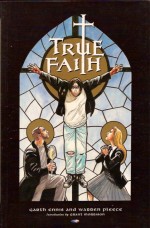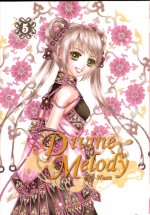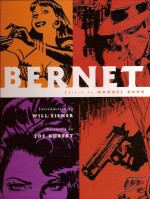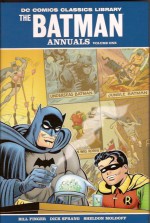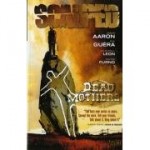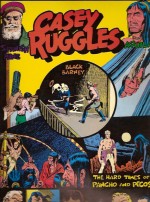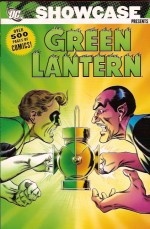
By John Broome, Gardner Fox, Gil Kane, Sid Greene & Carmine Infantino (DC Comics)
ISBN13: 978-1-84576-853-9
Firmly established as a major star of the company firmament, Green Lantern increasingly became a series which provided conceptual highpoints and “big picture†foundations that successive creators would use to build the tight-knit history and continuity of the DC universe. At this time there was also a turning away from the simple imaginative wonder of a ring that could do anything in favour of a hero who preferred to use his fists first and ignore easy solutions.
What a happy coincidence that at this time artist Gil Kane was just reaching his artistic peak, his dynamic full-body anatomical triumphs bursting with energy and crashing out of every page…
Green Lantern #39 (September 1965) featured two tales by John Broome, Kane and master inker Sid Green; a return engagement for Black Hand, the Cliché Criminal entitled ‘Practice Makes the Perfect Crime!’ and a bombastic slugfest with an alien prize fighter named Bru Tusfors, ‘The Fight for the Championship of the Universe!’ They were mere warm-ups for the next issue.
‘The Secret Origin of the Guardians!’ was a landmark second only to ‘Flash of Two Worlds’ (see Showcase Presents the Flash volume 2 or Crisis on Multiple Earths: the Team-ups volume 1) as Broome teamed the Emerald Gladiator with his Earth-2 counterpart Alan Scott to stop Krona, an obsessed Oan scientist whose misguided attempts to discover the origins of the universe had introduced evil into our reality billions of years ago and forced his immortal brethren to become protectors of life and civilisation in an unending act of group contrition.
Simultaneously high concept and action packed, this tale became the accepted keystone of DC cosmology and the springboard for all those mega-apocalyptic publishing events such as Crisis on Infinite Earths. It has seldom been equalled and never bettered…
Issue #41 featured twisted romance in ‘The Double Life of Star Sapphire!’ as an alien power-gem once more compelled Carol Ferris to subjugate and marry her sometime paramour Green Lantern, and Gardner Fox wrote another cracking magical mystery as the extraterrestrial wizard Myrwhydden posed ‘The Challenge of the Coin Creatures!’
In ‘The Other Side of the World!’ Fox continued a long-running experiment in continuity with a superb tale of time-lost civilisations and an extra-dimensional invasion by the Warlock of Ys that co-starred the peripatetic Zatanna the Magician.
The top-hatted, fish-netted, comely young sorceress had appeared in a number of Julie Schwartz-edited titles hunting her long-missing father Zatarra: a magician-hero in the Mandrake mould who had fought evil in the pages of Action Comics for over a decade beginning with the very first issue. In true Silver Age “refit†style Fox created his young and equally gifted daughter, and popularised her by guest-teaming her with a selection of superheroes he was currently scripting (if you’re counting, these tales appeared in Hawkman #4, Atom #19, Green Lantern #42, and the Elongated Man back-up strip in Detective Comics #355 as well as a very slick piece of back writing to include the high-profile Caped Crusader via Detective #336 – ‘Batman’s Bewitched Nightmare’, before concluding after the GL segment in Justice League of America #51).
The Flash guest-starred in a high-powered tussle with a new nemesis in the ‘Catastrophic Crimes of Major Disaster!’ in #43 and the next issue provide two tales – a rarity as book-length epics increasing became the action-packed norm. Oddly, second-class postage discounts had for years dictated the format of comic-books: to qualify for cheaper rates periodicals had to contain more than one feature, but when the rules were revised single, complete tales not divided into “chapters†soon proliferated. Here though are two reasons to bemoan the switch; Fox’s ‘Evil Star’s Death-Duel Summons’ and Broome’s Jordan Brothers adventure ‘Saga of the Millionaire Schemer!’, offering high-intensity super-villain action and heady, witty mystery.
The Earth-2 Green Lantern returned for another team-up in #45’s fantasy romp ‘Prince Peril’s Power Play’ by Broome, who raised the dramatic stakes with the hero’s first continued adventure in the following issue. Before that, though Green Lantern #56 opened with a delightfully grounded crime-thriller ‘The Jailing of Hal Jordan’ from Fox, before ‘The End of a Gladiator!’ detailed the murder of GL by old foe Dr. Polaris and concluded with his funeral on Oa, home of the Guardians!
Broome was on fire at this time: the following issue found the hero’s corpse snatched to the 58th century and revived in time to save his occasional future home from a biological infection of pure evil in the spectacular conclusion ‘Green Lantern Lives Again!’
Bizarrely garbed goodies and baddies were common currency at this time of “Batmania†so when gold-plated mad scientist Keith Kenyon returned it was as a dyed-in-the-wool costumed crazy in Fox’s ‘Goldface’s Grudge Fight Against Green Lantern!’, although Broome’s showbiz scoundrel Dazzler didn’t quite set the world afire in #49’s ‘The Spectacular Robberies of TV’s Master Villain!’ The story was still a shocker however as Hal Jordan quit his job as a Coast City test Pilot and went on the first of his vagabond quests across America…
With Green Lantern #50 Gil Kane began inking his own art, lending the proceedings a raw, savage appeal. The fight content in the stories was also ramped up, as seen in Broome’s murder-mystery treasure hunt ‘The Quest for the Wicked Queen of Hearts!’ which was complimented by an extragalactic smack-fest in Fox’s ‘Thraxton the Powerful vs Green Lantern the Powerless’ before Broome took the Emerald Crusader back to the 58th century to battle ‘Green Lantern’s Evil Alter Ego!’ in #52.
Alan Scott and comedy sidekick Doiby Dickles popped over from Earth-2 to aid against the return of arch nemesis Sinestro in the frankly peculiar ‘Our Mastermind, the Car!’ by Broome and Kane, but found a much less outré plot or memorable foe in #53’s ‘Captive of the Evil Eye!’ whilst artists Carmine Infantino and Sid Greene stepped in to illustrate Broome’s thrillingly comedic Jordan Brothers back-up ‘Two Green Lanterns in the Family!’ as Hal took a job as a county-spanning investigator for the Evergreen Insurance company.
Broome and Kane were reunited for the positively surreal, super-scientific ‘Menace in the Iron Lung!’ (#54), and all-out attack on the Guardians in ‘Cosmic Enemy Number One’, which concluded in ‘The Green Lanterns’ Fight for Survival!’ and the appointment of a second Earthling to the Corps.
Fox scripted a sparkling Fights ‘n’ Tights duel in ‘The Catastrophic Weapons of Major Disaster!’ (#57) and a gripping psycho-thriller in #58’s ‘Peril of the Powerless Green Lantern’ wherein the hero seemingly suffered from debilitating combat fatigue. Sid Greene returned with this latter and stayed to ink the last tale in this volume, another continuity landmark.
In issue #59 (March 1968) Broome introduced Guy Gardner ‘Earth’s Other Green Lantern!’ in a rip-roaring cosmic epic of what-might-have-been. When dying GL Abin Sur had ordered his ring to select a worthy successor Hal Jordan hadn’t been the only candidate, but the closest of two. What if the ring had chosen his alternative instead…?
With a superb double page pin-up from GL #46 to end on this book gathers the imaginative and creative peak of Broome, Fox and Kane, a plot driven plethora of adventure sagas and masterful thrillers that literally reshaped the DC Universe. Action lovers and fans of fantasy fiction couldn’t find a better example of everything that defines superhero comics.
© 1965, 1966, 1967, 1968, 2008 DC Comics. All Rights Reserved.


